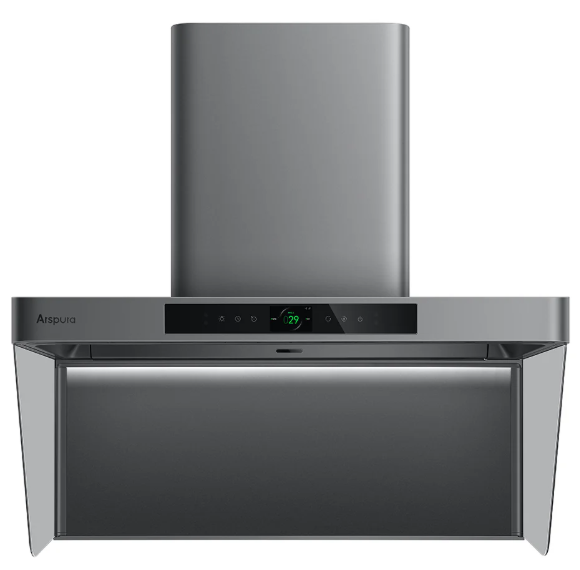The kitchen has evolved from a purely functional space into the heart of the modern home, where families gather and culinary creativity flourishes. Yet even the most beautifully designed kitchen can suffer from lingering cooking odors, excessive moisture, and airborne grease particles that compromise both comfort and health. This is where advanced ventilation fans step in as unsung heroes, silently working to maintain fresh air while contributing significantly to your kitchen’s visual appeal. Today’s ventilation systems are far from the bulky, noisy appliances of the past. They combine cutting-edge technology with sleek designs that complement any kitchen style, from contemporary minimalism to classic elegance. Whether you’re remodeling your existing space or planning a new kitchen from scratch, understanding how modern ventilation fans can transform both air quality and aesthetics is essential. The right ventilation system doesn’t just remove unwanted smoke and steam—it becomes an integral design element that elevates your entire kitchen experience, protecting your family’s health while adding a sophisticated finishing touch to your culinary sanctuary.
Understanding the Importance of Kitchen Ventilation
Proper kitchen ventilation serves as your home’s first line of defense against a host of environmental and health concerns that arise during cooking. Every time you prepare a meal, your kitchen releases a complex mixture of steam, smoke, grease particles, carbon monoxide, and nitrogen dioxide into the air. Without adequate ventilation, these contaminants accumulate on surfaces, creating stubborn residue on cabinets and walls while potentially triggering respiratory issues, allergies, and headaches among household members. The moisture generated from boiling, steaming, and simmering can lead to mold growth in hidden corners, compromising your home’s structural integrity and air quality over time. Beyond health considerations, inadequate ventilation affects your kitchen’s longevity and appearance. Grease-laden air settles on light fixtures, countertops, and appliances, requiring constant cleaning and accelerating wear. The lingering odors from fish, spices, and fried foods can permeate fabrics and adjacent rooms, making your entire home less inviting. An effective ventilation system addresses these challenges by continuously exchanging stale indoor air with fresh outdoor air, maintaining optimal humidity levels between 30-50%, and filtering out harmful particles before they settle. This creates a comfortable cooking environment where you can focus on culinary creativity rather than worrying about air quality, making proper ventilation not just a luxury but an essential component of any well-functioning kitchen.
Top Features to Look for in a Kitchen Ventilation Fan
Selecting the right kitchen wall ventilation fan requires balancing performance capabilities with design elements that complement your space. The most critical feature is airflow capacity, measured in cubic feet per minute (CFM), which should match your cooking habits and kitchen size—typically 100 CFM for every linear foot of cooktop, with higher ratings needed for gas ranges or frequent high-heat cooking. Noise level is equally important, as measured in sones; look for units operating below 3.0 sones to maintain a peaceful cooking environment without sacrificing power. Modern ventilation fans offer multiple speed settings that let you adjust airflow intensity based on what you’re preparing, from gentle simmering to intense searing. Energy efficiency ratings help reduce long-term operating costs while minimizing environmental impact. The filtration system deserves careful consideration—baffle filters excel at trapping grease in professional settings, while mesh filters offer easier maintenance for home cooks, and charcoal filters work best in recirculating systems. Lighting integration has become standard, with LED options providing bright, energy-efficient illumination over your cooking surface. Smart features like automatic sensors that detect smoke or steam, touch controls, and connectivity with home automation systems add convenience. Finally, consider the installation type—ducted systems that vent outdoors provide superior performance, while ductless options offer flexibility in kitchens where external venting isn’t feasible, though they require regular filter replacement to maintain effectiveness.
High-Quality Range Hoods
Investing in a high-quality range hood transforms your kitchen ventilation from a basic necessity into a long-term asset that pays dividends in performance and durability. Premium range hoods feature commercial-grade stainless steel construction that resists corrosion, withstands high temperatures, and maintains its appearance through years of daily use. These units incorporate powerful yet quiet motors with advanced engineering that minimizes vibration and operational noise, allowing conversation to continue comfortably even at higher speed settings. Quality range hoods include seamless welding and precision manufacturing that prevents grease accumulation in joints and crevices, making cleaning straightforward and preventing bacterial growth. The superior materials and craftsmanship mean these units maintain consistent airflow efficiency over time rather than degrading with use. Many high-end models offer lifetime warranties on motors and extended coverage on components, reflecting manufacturer confidence in longevity. While the initial investment exceeds budget options, quality range hoods avoid the replacement costs and performance frustrations associated with cheaper alternatives, ultimately providing better value through reliable operation and timeless design.
Strong Ventilation for Cooking
Strong ventilation capacity stands as the cornerstone of effective kitchen air management, directly determining how well your system handles the realities of daily cooking. The ventilation power you need depends on your cooktop’s BTU output—gas ranges producing over 60,000 BTUs require at least 600 CFM to adequately capture combustion byproducts and heat, while standard electric cooktops function well with 300-400 CFM. Proper capture area is equally crucial; your range hood should extend at least three inches beyond the cooktop on each side to create an effective containment zone that prevents smoke and steam from escaping into your kitchen. Installation height matters significantly—mounting your ventilation fan 24-30 inches above electric cooktops or 30-36 inches above gas ranges optimizes capture efficiency without interfering with cooking activities. Strong ventilation systems incorporate strategic airflow patterns that create a capture zone drawing contaminants upward before they disperse throughout the room. For serious home cooks who frequently sear meats, use woks, or prepare aromatic dishes, investing in higher CFM ratings prevents overwhelming the system during peak cooking moments. Consider makeup air requirements in tightly sealed modern homes; ventilation systems exceeding 400 CFM may create negative pressure that interferes with furnace operation or draws backdrafts, potentially requiring supplemental air intake solutions to maintain safe, effective ventilation performance.
Designing a Functional and Stylish Kitchen
Modern kitchen ventilation fans have evolved into sophisticated design elements that enhance rather than detract from your kitchen’s visual identity. The key to successful integration lies in treating ventilation as a focal point rather than an afterthought, selecting styles and finishes that harmonize with your overall design vision. Wall-mounted chimney hoods make dramatic architectural statements in contemporary kitchens, with sleek stainless steel or glass canopies that draw the eye upward and create visual interest above the cooktop. For traditional or transitional spaces, decorative range hoods crafted from wood, copper, or custom-painted materials can mirror cabinetry details and become centerpiece features. Island installations present unique opportunities for sculptural suspended hoods that define cooking zones while maintaining open sightlines across the space. Under-cabinet models offer discreet functionality in minimalist designs where clean lines take priority, virtually disappearing while providing essential ventilation. Consider how your ventilation fan’s proportions relate to surrounding elements—an oversized hood balances a large island or professional range, while compact units suit smaller galley configurations. Finish coordination matters significantly; matching your ventilation fan’s metal finish to faucets, cabinet hardware, and appliances creates cohesive visual flow. Integrated lighting should complement your kitchen’s ambient and task lighting scheme, with dimmable LEDs offering flexibility for different activities. Custom panel options allow ventilation systems to blend seamlessly with cabinetry in handleless modern kitchens. The most successful designs recognize that ventilation fans occupy prime visual real estate, transforming this practical necessity into an opportunity for architectural expression that reinforces your kitchen’s style while delivering exceptional performance.
Kitchen Aesthetics
The aesthetic impact of your ventilation fan extends far beyond the unit itself, influencing spatial perception and atmosphere throughout your kitchen. A thoughtfully selected range hood can establish visual hierarchy, anchoring the cooking zone as the kitchen’s focal point while creating vertical interest that balances lower cabinetry mass. Reflective stainless steel surfaces amplify natural light and make spaces feel larger, particularly valuable in compact kitchens where every design choice affects perceived spaciousness. Conversely, matte black or custom-colored finishes provide striking contrast that adds drama and sophistication to neutral palettes. The hood’s profile affects room proportions—angular geometric designs emphasize modern sensibilities, while curved or arched forms soften spaces with organic warmth. Proper scale ensures visual balance; your ventilation fan should command attention without overwhelming adjacent elements, typically occupying similar visual weight to your range or cooktop below. Home supply brands like Arspura offer various finish options that help homeowners coordinate their ventilation systems with existing kitchen elements, ensuring cohesive design throughout the space. Integrated ventilation systems concealed within cabinetry or ceiling soffits suit minimalist aesthetics where mechanical elements remain hidden, though they sacrifice the opportunity for architectural expression that exposed hoods provide.
Health Protection
Beyond aesthetic contributions, advanced ventilation fans serve as essential guardians of your household’s respiratory health and overall wellbeing. During cooking, gas ranges release nitrogen dioxide and carbon monoxide—colorless gases that accumulate to harmful levels without proper ventilation, potentially causing headaches, dizziness, and long-term respiratory complications. High-heat cooking methods like frying and searing generate ultrafine particulate matter small enough to penetrate deep into lung tissue, with studies linking poor kitchen ventilation to increased asthma symptoms and cardiovascular stress. Effective ventilation systems remove these invisible threats in real-time, preventing their dispersion throughout your home where they affect even family members not present during cooking. Moisture control through proper ventilation prevents mold spore proliferation, protecting vulnerable individuals from allergic reactions and respiratory irritation. Modern ventilation fans equipped with activated charcoal filters capture volatile organic compounds released from cleaning products and non-stick cookware, further reducing chemical exposure. The continuous air exchange provided by quality ventilation maintains oxygen levels and prevents the stuffiness that causes fatigue during extended cooking sessions. For households with young children, elderly members, or anyone with respiratory sensitivities, robust kitchen ventilation isn’t merely a convenience—it’s a critical health intervention that creates safer indoor environments where families can gather without compromising their wellbeing, making the investment in advanced ventilation systems one of the most impactful health decisions homeowners can make.
Transform Your Kitchen with Advanced Ventilation
Upgrading to advanced ventilation fans represents a strategic investment that simultaneously elevates your kitchen’s aesthetic appeal and safeguards your family’s health. Modern ventilation systems have transcended their utilitarian origins to become sophisticated design elements that complement any kitchen style, from sleek contemporary spaces to warm traditional settings. By selecting a ventilation fan with appropriate CFM ratings, quiet operation, and quality construction, you ensure effective removal of cooking byproducts, moisture, and odors that compromise both comfort and air quality. The right system prevents grease accumulation, eliminates harmful gases like carbon monoxide and nitrogen dioxide, and controls humidity levels that otherwise foster mold growth. Beyond functional benefits, today’s range hoods serve as architectural focal points that define cooking zones and enhance visual hierarchy through thoughtful material choices, proportional balance, and finish coordination. Whether you choose a dramatic statement piece or discreet integrated solution, prioritizing both performance and design creates a kitchen environment where culinary creativity flourishes without sacrificing wellbeing. As you plan your kitchen upgrade, remember that advanced ventilation isn’t merely an accessory—it’s a fundamental component that protects your investment, enhances daily living, and transforms your kitchen into a healthier, more beautiful space where memories are made.


